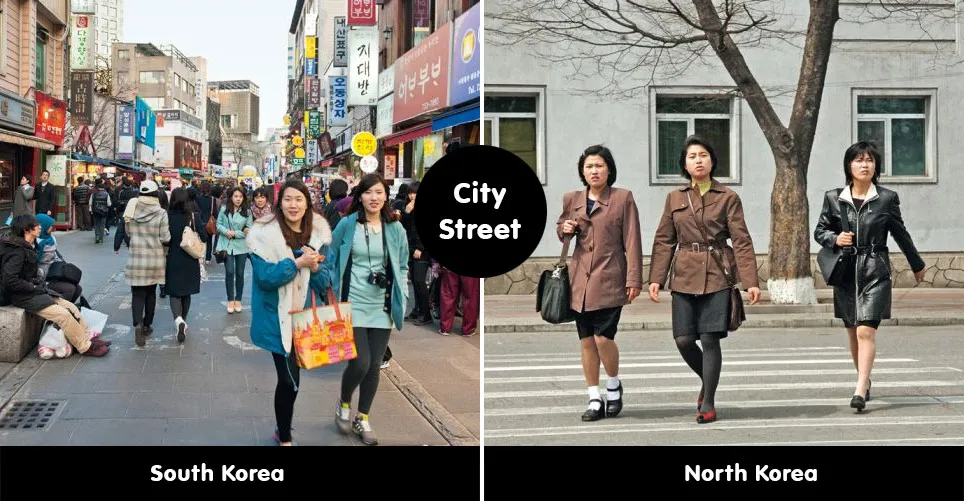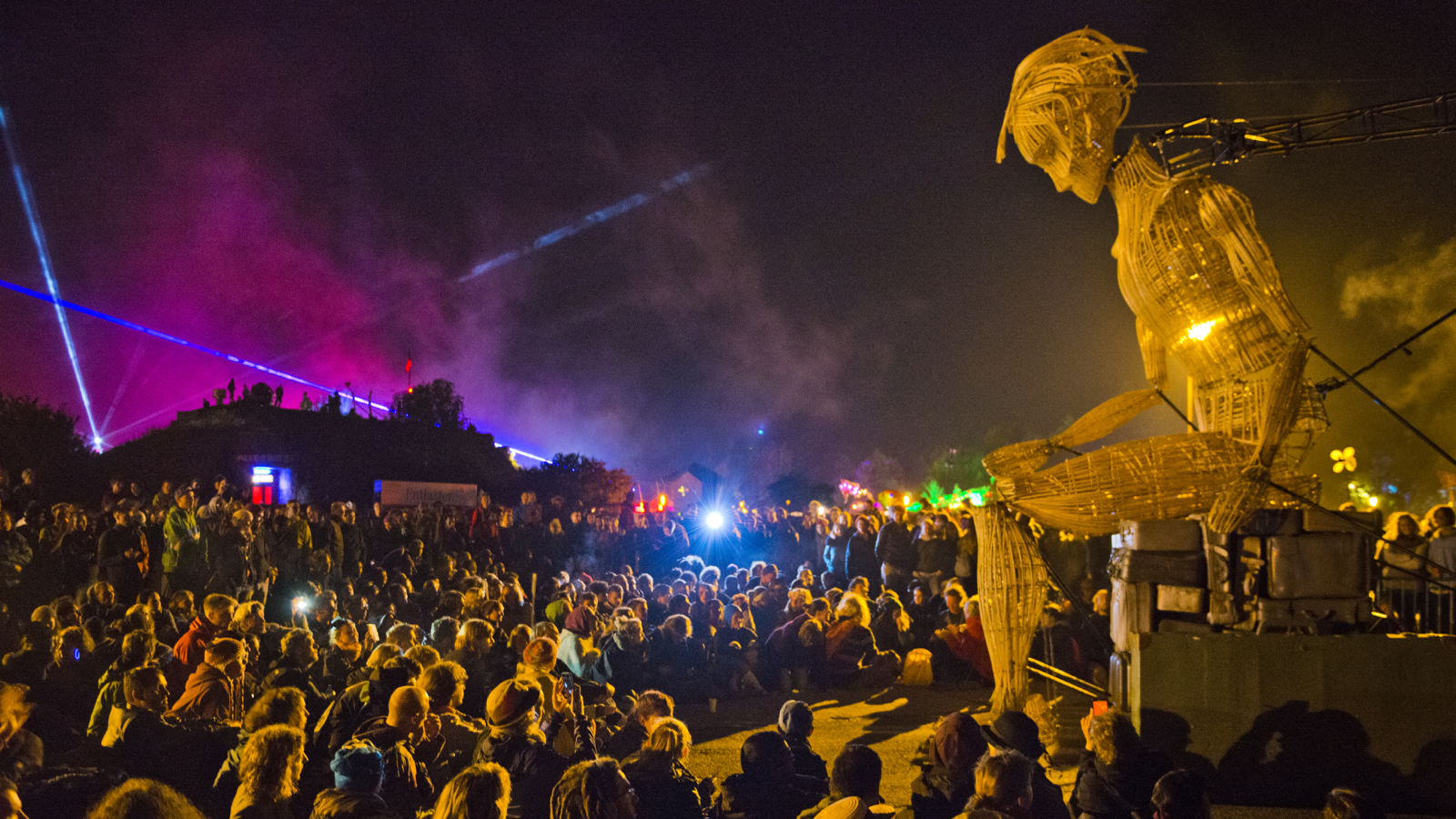 Music has always played a significant role in shaping cultural identities and reflecting historical events. In the case of North and South Korea, the development of music has been profoundly influenced by a complex interplay of historical factors. The division of the Korean peninsula after World War II and the subsequent ideological differences between the two countries have had a lasting impact on their musical traditions.
Music has always played a significant role in shaping cultural identities and reflecting historical events. In the case of North and South Korea, the development of music has been profoundly influenced by a complex interplay of historical factors. The division of the Korean peninsula after World War II and the subsequent ideological differences between the two countries have had a lasting impact on their musical traditions.
The division of Korea in 1945, following Japan’s surrender, marked a turning point in the region’s history. The peninsula was split into two separate nations, with the Soviet Union controlling the north and the United States occupying the south. This division not only had political and economic consequences but also deeply affected the cultural fabric of the two countries, including their music.
In North Korea, under the leadership of Kim Il-sung, music became a powerful tool for promoting the ideology of Juche, which emphasizes self-reliance and isolation from the outside world. The regime heavily controlled and used music to spread propaganda and create a sense of national unity. The state-sponsored music industry produced revolutionary songs praising the country’s leaders, socialism, and the struggle against imperialism. Traditional folk music was also adapted to serve the socialist cause, with new lyrics highlighting themes of class struggle and loyalty to the state.
On the other hand, South Korea, under the influence of the United States, experienced rapid economic growth and embraced Western cultural influences, including music. The pop music industry in South Korea, known as K-pop, became a global phenomenon and a significant cultural export. K-pop blended elements of Western pop with traditional Korean music, creating a unique and catchy sound that captivated audiences worldwide. The success of K-pop has not only contributed to South Korea’s soft power but has also played a role in shaping the country’s cultural identity and modern music scene.
Despite the ideological and political differences, both North and South Korea share some common musical roots. Traditional Korean music, known as Gukak, has a rich history that predates the division of the peninsula. Gukak encompasses various styles, including court music, folk music, and religious music. The traditional instruments, such as the gayageum and the daegeum, continue to be widely used in both countries.
In conclusion, the historical factors that have influenced the development of music in North and South Korea are deeply intertwined with the division of the Korean peninsula and subsequent ideological differences. The North Korean regime used music as a tool for propaganda and promoting socialist ideology, while South Korea embraced Western influences and developed a globally recognized pop music industry. However, both countries still maintain a connection to their traditional music, reflecting a shared cultural heritage. The rich and diverse musical traditions of North and South Korea continue to evolve, showing the resilience and adaptability of music in the face of historical challenges.
Traditional Music:
Highlight the distinct traditional music styles and instruments prevalent in North and South Korea. Describe the unique characteristics of genres such as Pansori and Sinawi in South Korea and Chongak and Munmyo in North Korea. Discuss how these traditional forms have been preserved and evolved over time.
In both North and South Korea, traditional music plays an integral role in the cultural fabric of the nations. With a rich history that spans centuries, the distinct music styles and instruments of each country have captivated audiences worldwide. From soul-stirring vocals to mesmerizing sounds from traditional instruments, Korean traditional music offers a glimpse into the unique heritage and artistry of these nations.
South Korea boasts a diverse range of traditional music genres, with Pansori and Sinawi standing out as prominent examples. Pansori, a form of musical storytelling, combines powerful vocals with rhythmic drumming. This genre often portrays epic tales of love, loyalty, and tragedy, leaving listeners emotionally moved. Sinawi, on the other hand, emphasizes improvisation and collaboration among instrumentalists. It is characterized by its meditative melodies and repetitive patterns, creating a tranquil and introspective atmosphere.
In North Korea, Chongak and Munmyo are significant traditional music genres that have persevered throughout history. Chongak, meaning “literally, “elegant music,”” encompasses both instrumental and vocal performances. This genre showcases a wide range of traditional instruments, including the gayageum (a zither-like instrument) and the piri (a bamboo flute). Munmyo, on the other hand, is a genre associated with Confucian rituals and ceremonies. It features solemn and reverent melodies performed on instruments such as the daegeum (a large bamboo flute) and the geomungo (a six-stringed zither).
Despite the passing of time, these traditional music forms have managed to endure and evolve. Preservation efforts have played a crucial role in ensuring their continued existence. Institutions like the National Gugak Center in South Korea and the State Merited Chorus in North Korea have dedicated themselves to preserving and promoting traditional music. Through educational programs, performances, and recordings, these institutions have created platforms for younger generations to appreciate and learn about their cultural heritage.
Moreover, traditional music has also found its way into contemporary popular culture, creating a bridge between the old and the new. Modern interpretations of traditional music, known as fusion or crossover, have gained popularity among younger audiences. Artists like Jambinai and Black String in South Korea, and the cross-border collaboration group New Wave in North Korea, have successfully blended traditional melodies with modern elements, captivating listeners across generations.
In conclusion, the traditional music of North and South Korea showcases a myriad of unique styles and instruments that have stood the test of time. Pansori and Sinawi in South Korea and Chongak and Munmyo in North Korea exemplify the depth and diversity of these traditions. Through preservation efforts and contemporary interpretations, these traditional forms continue to evolve and capture the hearts of people worldwide, ensuring that the rich cultural heritage of Korean traditional music remains alive for generations to come.
Modern Influences: Examine the impact of modernization and globalization on the music scenes of North and South Korea. Analyze how Western and international musical styles have influenced contemporary music in both countries. Discuss the rise of K-pop in South Korea and the state-controlled music industry in North Korea.
The influence of modernization and globalization on the music scenes of North and South Korea has been significant, shaping the contemporary sound of both countries. Western and international musical styles have found their way into the hearts and ears of many artists and listeners alike. Let’s delve into the fascinating journey of musical evolution in these two nations.
In South Korea, the rise of K-pop has been nothing short of a phenomenon. With its catchy melodies, synchronized dance moves, and visually captivating performances, K-pop has taken the world by storm. This genre, influenced by Western pop music, has become a global sensation, attracting millions of fans worldwide. The fusion of Korean and Western elements in K-pop has created a unique sound that resonates across cultures and transcends borders.
Modernization and globalization have also impacted the music scene in North Korea, albeit in a different way. With its state-controlled music industry, the government in North Korea plays a pivotal role in shaping the country’s musical landscape. The focus is often on promoting and preserving traditional folk music and revolutionary songs that glorify the regime. However, even within these constraints, there have been subtle influences from Western and international musical styles. Elements of jazz, classical music, and even rock can be found in North Korean compositions, albeit with a distinct ideological touch.
The introduction of modern technologies has further accelerated the exchange of musical ideas between North and South Korea. Despite political tensions, music has served as a bridge, connecting people on both sides of the border. South Korean artists and their music have had a profound impact on North Korean listeners, who often access South Korean content through illegal means. This underground music scene in North Korea reflects the desire for cultural diversity and a hunger for something beyond the state-controlled narratives.
At the same time, North Korean folk and revolutionary songs have also found their way into the South Korean music industry. Some South Korean artists have incorporated elements of these traditional melodies into their compositions, seeking to preserve and promote their shared cultural heritage. This blending of styles not only showcases the resilience of Korean music but also fosters a sense of unity and understanding among the people of both nations.
In conclusion, modernization and globalization have significantly influenced the music scenes of North and South Korea. While K-pop has become a global sensation, captivating audiences worldwide, the state-controlled music industry in North Korea has created a unique musical landscape. The exchange of musical ideas and the blending of styles between the two nations further highlights the power of music in transcending boundaries and fostering cultural connections. As the world becomes increasingly interconnected, the music of North and South Korea continues to evolve, creating a harmonious symphony that reflects the shared heritage and aspirations of the Korean people.
Music has always held a significant place in the cultural fabric of societies around the world. In North and South Korea, music has not only been a source of entertainment but also a powerful tool for political propaganda, national identity, and cultural expression. The role of music in fostering unity or divisions among the people of both countries cannot be overlooked.
In both North and South Korea, music has been extensively used as a tool for political propaganda. The governments have utilized music to promote their ideologies and consolidate their power. In North Korea, the ruling regime has employed music to glorify its leaders and promote loyalty among the citizens. Songs praising the country’s leaders, such as the iconic “Song of General Kim Il-sung,” have become instrumental in cultivating a sense of devotion and reverence towards the regime. Similarly, in South Korea, music has been used during political campaigns to rally support for candidates and parties. Campaign songs often carry messages that resonate with the voters, aiming to influence their political inclinations.
Furthermore, music plays a crucial role in shaping national identity in both North and South Korea. In North Korea, music is used to reinforce the narrative of a self-reliant and militarily strong nation. The iconic revolutionary songs like “Arirang” are deeply ingrained in the collective consciousness of the North Korean people, symbolizing their struggle for independence and resilience. In South Korea, music has played a pivotal role in the country’s rapid modernization and globalization. The K-pop phenomenon, with its catchy tunes and synchronized choreography, has become a global sensation and a symbol of South Korea’s cultural influence. K-pop has contributed significantly to shaping the image of South Korea as a technologically advanced and vibrant nation.
At the same time, music also serves as a medium for cultural expression in both countries. In North Korea, traditional music, such as Pansori and Arirang, showcases the rich cultural heritage of the country. These songs tell stories of love, sorrow, and resilience, reflecting the daily lives and struggles of the North Korean people. In South Korea, music has evolved to encompass various genres, ranging from traditional folk songs to contemporary pop and hip-hop. Artists like Psy and BTS have transcended borders, using music to express their personal experiences, emotions, and aspirations, resonating with millions of fans worldwide.
However, it is essential to recognize that music in both North and South Korea can also foster divisions among the people. In North Korea, music is strictly controlled by the state, with only a limited range of approved songs allowed. This restriction stifles artistic freedom and limits the diversity of musical expression. In South Korea, although the music industry thrives, it is not immune to controversies and criticisms. The highly competitive nature of the K-pop industry and the pressure on artists to conform to societal expectations can create divisions and unhealthy competition among fans.
In conclusion, music in North and South Korea serves as a powerful tool for political propaganda, national identity, and cultural expression. It highlights the complexities of these societies, fostering unity among the people while also potentially creating divisions. Whether it is used to glorify leaders, express cultural heritage, or captivate global audiences, music continues to play a significant role in shaping the Korean identities and reflecting the social and political dynamics of the two countries.



